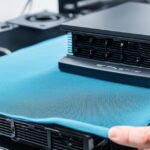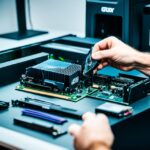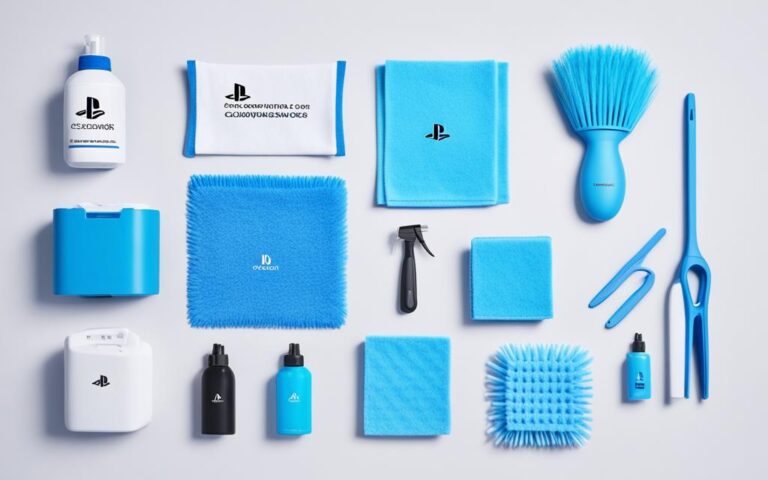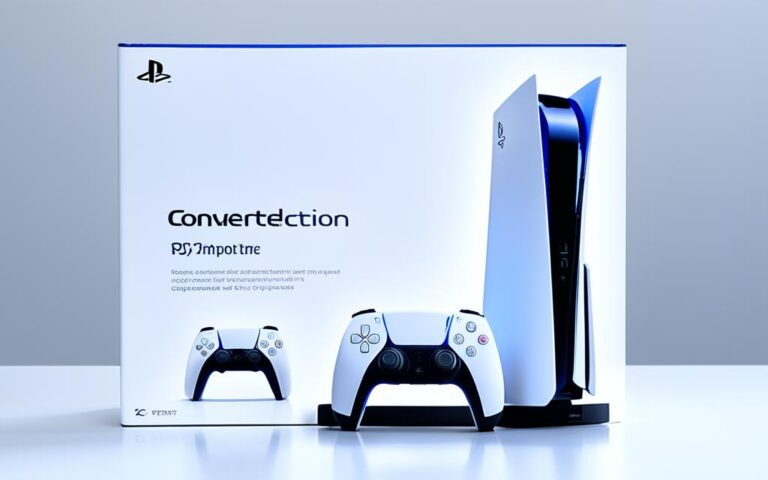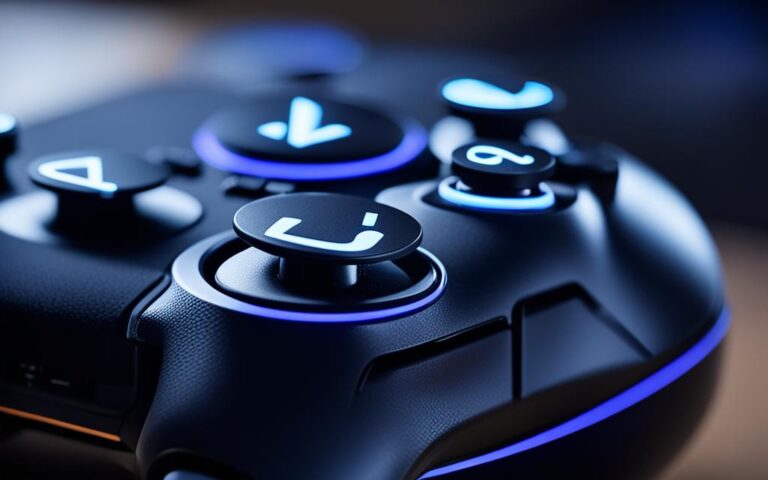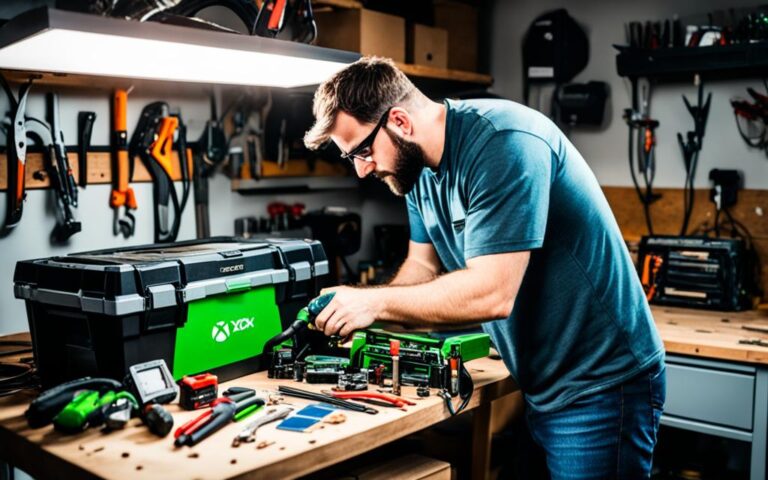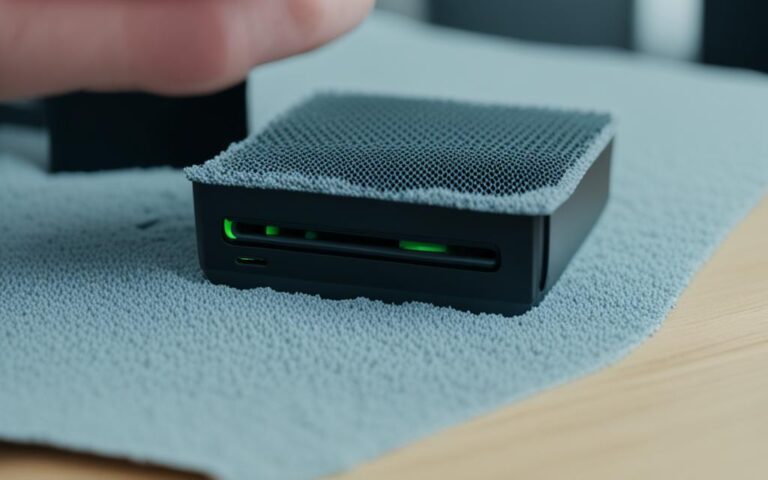Advanced Gaming Hardware Troubleshooting Methods
Welcome to our guide on advanced gaming hardware troubleshooting methods. As a dedicated gamer, you understand the frustration that comes with hardware failures during gameplay. Whether it’s a glitchy graphics card, a sluggish CPU, or an unreliable power supply unit, these issues can greatly impact your gaming experience. In this article, we will explore advanced troubleshooting methods to help you identify and resolve gaming hardware issues efficiently.
Hardware failures can occur in various components of your gaming PC, including GPUs, hard drives/SSDs, RAM, PSUs, fans, and CPUs. These failures can lead to system crashes, lag, and poor performance. To prevent these problems, it’s crucial to perform regular hardware diagnostic tests. By identifying failing hardware early, you can take appropriate measures and avoid disruptions during your gaming sessions.
In Windows 10/11, you can make use of the built-in hardware diagnostic tools to assess the health of your gaming hardware. The Performance Monitor provides a comprehensive overview of system performance and diagnostics, allowing you to monitor crucial metrics. Additionally, the Windows Memory Diagnostic tool tests your RAM for any issues that may be affecting system stability.
If you prefer more comprehensive testing options, there are also third-party apps available. MemTest86+ is a powerful tool specifically designed to test RAM. CrystalDiskInfo offers detailed information about the health and performance of your hard drives and SSDs. HWiNFO provides extensive hardware testing and real-time system health monitoring, giving you a deeper understanding of your gaming hardware’s condition.
In addition to diagnosing and optimizing your gaming hardware, it’s essential to pay attention to your computer’s battery health if you game on a laptop. Windows provides a built-in tool called powercfg that generates a detailed battery report, including information on capacity, charging status, and more. By regularly checking your battery’s health, you can ensure optimal performance and longevity.
When it comes to diagnosing hardware issues on Windows systems, PartedMagic and the Ultimate Boot CD are two useful tools. PartedMagic offers disk partitioning, rescue, and erasing tools, while the Ultimate Boot CD provides various Windows hardware checking utilities. Both require creating a bootable USB or CD, enabling you to diagnose and troubleshoot hardware issues effectively.
In conclusion, by implementing advanced gaming hardware troubleshooting methods, you can maintain optimal performance and reliability from your gaming hardware. Regular hardware diagnostic tests, the use of built-in Windows diagnostic tools, and third-party apps can help you identify failing components and prevent system crashes. Checking your computer’s battery health and utilizing diagnostic tools like PartedMagic and the Ultimate Boot CD further aid in diagnosing and resolving hardware issues. Happy gaming!
Common PC Hardware Failures
When it comes to PC hardware failures, there are a few components that commonly experience issues. These include GPUs, hard drives/SSDs, RAM, PSUs, fans, and CPUs. While CPUs are generally less prone to failure, they can still be affected by power problems or overheating.
Regular hardware diagnostic tests play a crucial role in identifying any potential issues with these components and preventing system crashes. By performing these tests, users can proactively address hardware failures before they cause major disruptions to their computing experience.
“It’s essential for PC users to be aware of the common hardware failures that can occur in their systems. By understanding the potential risks and taking proactive measures to diagnose and address these problems, users can ensure the longevity and reliability of their hardware.”
While it’s important to be aware of these common hardware failures, it’s worth noting that not all PC users may have the expertise to perform in-depth diagnostics and repairs. In such cases, seeking professional assistance from reputable technicians or service providers can help resolve the issue effectively and minimize potential downtime.
Next, we’ll explore the built-in hardware diagnostic tools available in Windows 10/11, which can aid in troubleshooting and identifying hardware-related problems.
Common PC Hardware Failures
| Component | Common Failures |
|---|---|
| GPU | Overheating, artifacting, driver issues |
| Hard Drives/SSDs | Data corruption, bad sectors, mechanical failure |
| RAM | Instability, random reboots, memory errors |
| PSU | Power fluctuations, failure to start, inadequate power supply |
| Fans | Noise, failure to spin, inadequate cooling |
| CPU | Overheating, power issues, bent pins |
Built-in Windows 10/11 Diagnostic Tools
Windows 10/11 provides users with two convenient built-in hardware diagnostic tools: Performance Monitor and Windows Memory Diagnostic. These tools are designed to help identify and troubleshoot potential hardware problems on your PC, ensuring optimal system performance and stability.
Performance Monitor:
The Performance Monitor tool offers a comprehensive overview of your system’s performance and diagnostics. It allows you to monitor various hardware components, such as CPU usage, memory usage, disk activity, and network activity. By analyzing real-time data and generating detailed reports, Performance Monitor can help you identify any bottlenecks or issues that may be affecting your system’s performance.
Windows Memory Diagnostic:
The Windows Memory Diagnostic tool is specifically designed to test the RAM (Random Access Memory) of your computer. It helps identify any potential issues, such as faulty memory modules or compatibility problems. By running a memory test, you can ensure the stability and reliability of your system, as RAM problems can often lead to crashes, system errors, and data corruption.
These built-in diagnostic tools offer a user-friendly interface and can be directly accessed from your Windows operating system. They provide valuable insights into your hardware’s performance and help you pinpoint any potential issues before they escalate. By regularly utilizing Performance Monitor and Windows Memory Diagnostic, you can effectively maintain the health of your PC and optimize its overall performance.
If you want more detailed information on how to access and use these built-in Windows diagnostic tools, check out the official Windows documentation or refer to the Windows support website.
| Windows Diagnostic Tools | Main Function |
|---|---|
| Performance Monitor | Provides a comprehensive overview of system performance and diagnostics |
| Windows Memory Diagnostic | Tests the RAM for any potential issues |
Third-Party Hardware Diagnostic Apps
When it comes to comprehensive hardware testing, relying solely on built-in diagnostic tools may not be enough. Thankfully, there are several third-party apps available that offer advanced features and in-depth analysis. These apps can provide a more thorough assessment of your system’s hardware health, allowing you to identify any failing components before they lead to major issues.
One such app is MemTest86+, a powerful tool specifically designed for testing RAM. By running MemTest86+, you can put your computer’s memory through rigorous testing and identify any potential errors or issues that may be causing system instability.
If you want detailed information about your hard drives and SSDs, CrystalDiskInfo is the go-to app. It provides comprehensive information about the health, temperature, and performance of your storage devices. With CrystalDiskInfo, you can easily identify any signs of disk failure or impending issues.
For those who need extensive hardware testing and real-time system monitoring, HWiNFO is an excellent choice. This app offers a wide range of diagnostic features, including monitoring CPU temperature, analyzing sensor data, and stress testing various hardware components. With HWiNFO, you can gain valuable insights into the health and performance of your computer.
By utilizing these third-party hardware diagnostic apps, you can ensure a more thorough analysis of your system’s hardware health. Whether you’re a gamer, a professional, or simply a tech enthusiast, these tools can help you diagnose and resolve hardware issues effectively.
Comparison of Third-Party Hardware Diagnostic Apps
| App | Main Features | Compatibility |
|---|---|---|
| MemTest86+ | RAM testing Supports multiple RAM configurations Extensive error reporting |
Compatible with most PCs and motherboards |
| CrystalDiskInfo | Detailed hard drive and SSD information Monitoring of disk health and temperature |
Compatible with Windows |
| HWiNFO | Comprehensive hardware monitoring Real-time system health monitoring |
Compatible with Windows |
Checking Computer’s Battery Health
The laptop battery is prone to failure, so it’s important to check its health. Windows has a built-in tool called powercfg that can generate a precise report on the battery status and history. By running the command powercfg /batteryreport, users can access a detailed battery report that provides information about the battery’s capacity, charging status, and more.
Regularly monitoring the health of your computer’s battery is crucial for ensuring optimal performance and longevity. By following these simple steps, you can check and maintain your battery’s health:
- Open the Command Prompt as an administrator by right-clicking on the Start button and selecting “Command Prompt (Admin)”.
- In the Command Prompt window, type
powercfg /batteryreportand press Enter. - Wait for the battery report to be generated, which may take a few moments.
- Locate the generated report, which is saved as an HTML file, and open it in your preferred web browser.
The battery report provides valuable information such as:
- Battery capacity – The maximum amount of charge the battery can hold compared to its original design capacity.
- Recent usage history – Details about how the battery has been used recently.
- Estimated battery life – An estimate of how long the battery should last based on your typical usage patterns.
- Charging behavior – Information about the battery’s charging patterns, including charge cycles and charging speed.
- Recent battery errors – Any reported errors or issues with the battery.
By regularly checking your computer’s battery health and paying attention to any warnings or issues highlighted in the report, you can take proactive steps to optimize your battery usage and extend its lifespan.
“Regularly monitoring the health of your computer’s battery is crucial for ensuring optimal performance and longevity.”
Battery Health Parameters
| Parameter | Description |
|---|---|
| Battery Capacity | The maximum amount of charge the battery can hold compared to its original design capacity. |
| Usage History | Details about how the battery has been used recently. |
| Estimated Battery Life | An estimate of how long the battery should last based on your typical usage patterns. |
| Charging Behavior | Information about the battery’s charging patterns, including charge cycles and charging speed. |
| Battery Errors | Any reported errors or issues with the battery. |
By regularly checking and maintaining your computer’s battery health, you can ensure that it performs optimally and avoid any unexpected issues or failures that may disrupt your workflow.
Diagnosing Windows Hardware with PartedMagic or The Ultimate Boot CD
When it comes to diagnosing faulty hardware on Windows systems, two powerful tools come to the rescue – PartedMagic and the Ultimate Boot CD. These tools provide comprehensive features and functionalities that can help identify and troubleshoot hardware issues, ensuring optimal system performance and reliability.
PartedMagic: PartedMagic offers a range of disk partitioning, rescue, and erasing tools. With its intuitive interface and extensive capabilities, it’s an invaluable tool for diagnosing hardware problems. By creating a bootable USB or CD using PartedMagic, users can access various diagnostics and testing features that can pinpoint failing components in their Windows systems.
The Ultimate Boot CD: As the name suggests, the Ultimate Boot CD is a comprehensive toolkit that includes a wide array of Windows hardware checking tools. It offers a collection of diagnostic utilities to analyze and diagnose common hardware failures. From memory testing to CPU stress testing, the Ultimate Boot CD provides an all-in-one solution for diagnosing and troubleshooting hardware problems.
Comparison Table: PartedMagic vs. The Ultimate Boot CD
| Tool | Features | Bootable Medium |
|---|---|---|
| PartedMagic |
|
USB or CD |
| The Ultimate Boot CD |
|
USB or CD |
“PartedMagic and the Ultimate Boot CD are indispensable tools for diagnosing and troubleshooting hardware issues on Windows systems. Whether you need to test your memory modules or perform disk partitioning, these tools provide the necessary features to identify failing components and ensure optimal system performance.” – Hardware Specialist
By utilizing PartedMagic or the Ultimate Boot CD, users can take advantage of the advanced diagnostic capabilities and extensive testing options these tools offer. With the ability to create a bootable USB or CD, users can easily access powerful hardware diagnostic features, enabling them to diagnose and troubleshoot various hardware problems on their Windows systems.
Conclusion
Troubleshooting gaming hardware issues is crucial for uninterrupted gameplay. By conducting regular hardware diagnostic tests, gamers can identify failing components and prevent system crashes. Whether using the built-in Windows diagnostic tools or third-party apps, a comprehensive range of testing options is available to ensure optimal performance and reliability from gaming hardware.
In addition to software tools, it is also important to check the health of your computer’s battery. Windows provides a built-in tool called powercfg, which generates a detailed battery report. This report offers valuable insights into the battery’s capacity, charging status, and overall condition, enabling users to monitor and maintain battery health effectively.
When faced with hardware issues that require advanced diagnosis, tools like PartedMagic and the Ultimate Boot CD can be invaluable. These diagnostic tools, which require creating a bootable USB or CD, provide additional features such as disk partitioning, rescue, and erasing tools, as well as various Windows hardware checking utilities. Using these tools, gamers can perform in-depth hardware tests, pinpoint any underlying issues, and troubleshoot accordingly.
By incorporating these advanced troubleshooting methods into their gaming routine, gamers can ensure optimal performance, prevent system crashes, and extend the lifespan of their gaming hardware. Whether it’s through regular hardware diagnostic tests, utilizing built-in Windows tools, or leveraging third-party apps and diagnostic utilities, proactive maintenance and identification of hardware issues are key to a seamless and enjoyable gaming experience.


